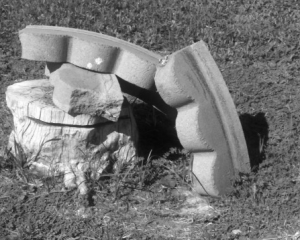 Today’s post is the fifth installment of the Wednesday Phoenix Tree and Shade Masterplan Series. Today’s installment is about the second step outlined to implement the Masterplan – Preserve, Protect and Increase. As you might recall, Raising Awareness was the first step which I discussed two weeks ago. The final step is Sustainable and Maintainable Infrastructure and that will be the subject of next week’s installment.
Today’s post is the fifth installment of the Wednesday Phoenix Tree and Shade Masterplan Series. Today’s installment is about the second step outlined to implement the Masterplan – Preserve, Protect and Increase. As you might recall, Raising Awareness was the first step which I discussed two weeks ago. The final step is Sustainable and Maintainable Infrastructure and that will be the subject of next week’s installment.
The goal of the Preserve, Protect and Increase phase is to “Preserve, protect and increase the quality and quantity of trees and vegetation, especially large shade trees in appropriate areas” according to the Masterplan. Currently, it’s estimated that the vegetative cover of Phoenix is less than 13%. Remember that the 2030 goal of the Masterplan is to create a vegetative cover of Phoenix that is 25%.
Here are the recommendations of the Masterplan to implement the Preserve, Protect and Increase phase:
1. Create the Urban Forest Infrastructure Team (UFIT). This step has already taken place and UFIT includes staff from the Streets Department, Planning and Development Services, Office of Arts and Culture, Neighborhood Services, Parks and Recreation and Water Services Department. This is the core group of members but they also bring in staff from other department from time to time.
2. Conduct a Tree Inventory. Forestry Supervisor Richard v-C Adkins with the Parks and Recreation Department is in the process of implementing this inventory as we speak.
3. Develop and Adopt Best Management Practices. This is the step that is currently under experimentation as I mentioned in last week’s installment. Because we live in a desert, it’s difficult to figure out which trees are best for our climate. Things to keep in mind while adopting best management practices are: tree placement criteria, tree planting specifications, tree selection criteria, Right Tree Right Place, tree canopy and stacking rates.
4. Research and Develop Dedicated Revenue Sources for the Urban Forest. The landscape maintenance budget has been reduced for the past three budget cycles. The Urban Forestry Program and the Horticulture Section have both been eliminated. And there has been an over 60% reduction in staffing for street landscaping forcing the maintenance to happen only every 47 days. You can see this reduced maintenance when you look around the city. Some trees are dying, some trees have never been replaced and sometimes their holes have been filled in with concrete. This is sad. That’s why there is an urgent need for creative revenue sources for our urban forest. The City just doesn’t have the money to do the job. This is where we need community members, businesses, and non-profits to come in and find creative ways to fund this very important initiative.
A reader asked if the City has applied for grants for the Tree and Shade Masterplan. According to Lyssa Hall, Landscape Architect with the Parks and Recreation Department, “Yes, we have applied for state grants for community workshops and regional training. Also, the Planning Department was the lead on writing a grant for shaded connections from the Light Rail to the neighborhoods. If this grant is awarded, I will be working on developing shade routes. We are regularly looking for additional resources to support Shade Phoenix 2030.”
5. Develop and Adopt Tree Banking/In Lieu of Fees. According to the Masterplan, “Tree Banking is described as the process of contracting with a developer or builder to plant trees or to contribute funds to a Tree Fund as an alternative to meeting the required canopy and shade goals associated with the zoning category being developed. Tree Banking is accomplished by contributing funds to a Tree Bank.” This is similar to buying Carbon Offsets. When there is a project or a property where it is not feasible to plant the required amount of trees, that property owner can contribute monies to this Tree Bank that will then be used to fund tree-planting in other locations such as parks, streetscapes, public spaces, and right of ways. The Tree Banking recommendation has not been adopted by the City yet.
Notes: There will be a Tree Planting at Steel Indian School Park on September 11, 2010. You must register with HandsOn Greater Phoenix to participate. Hope you can come out to join us and get your hands dirty planting trees!
Here are some links Ken Vonderscher, Deputy Director at the Parks and Recreation Department wanted to share with us:
Volunteer Opportunities at Parks and Recreation
Arizona Community Tree Council
Photo Credit: A tree stump on 16th St. north of Osborn. Photo by author.




















An idea:
A few years back when there was a major fire in Northern Arizona the Diamondbacks had a promotion/charity that every time they hit a Home Run, they’d pay to plant 10 trees back in that area. I’d love to see the City of Phoenix work out a deal with the D’backs like that for the City.
To take last year as an example the D’backs hit 173 home runs, that would mean 1,730 new trees for the city, that could make a substantial difference if the city placed all of those within the Downtown area.
I love that! I’ll pass it on to the authors of the Tree and Shade plan as a possible fundraising idea…
[…] step outlined in the Masterplan to restore our urban forest is Raising Awareness. The second is Preserve, Protect and Increase. Today I’ll be talking about the third and final step towards the Masterplan’s 2030 […]